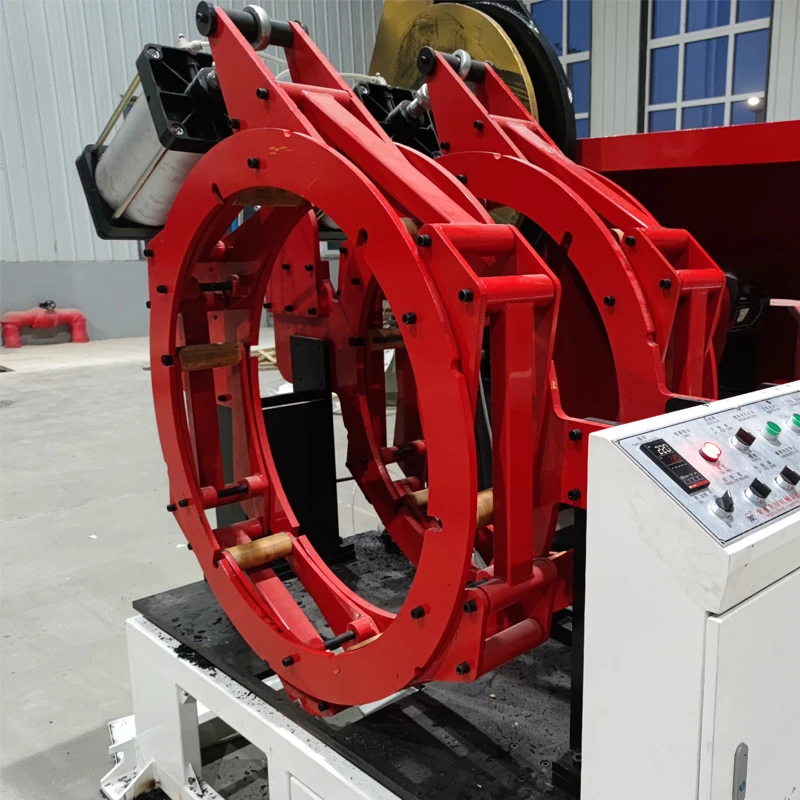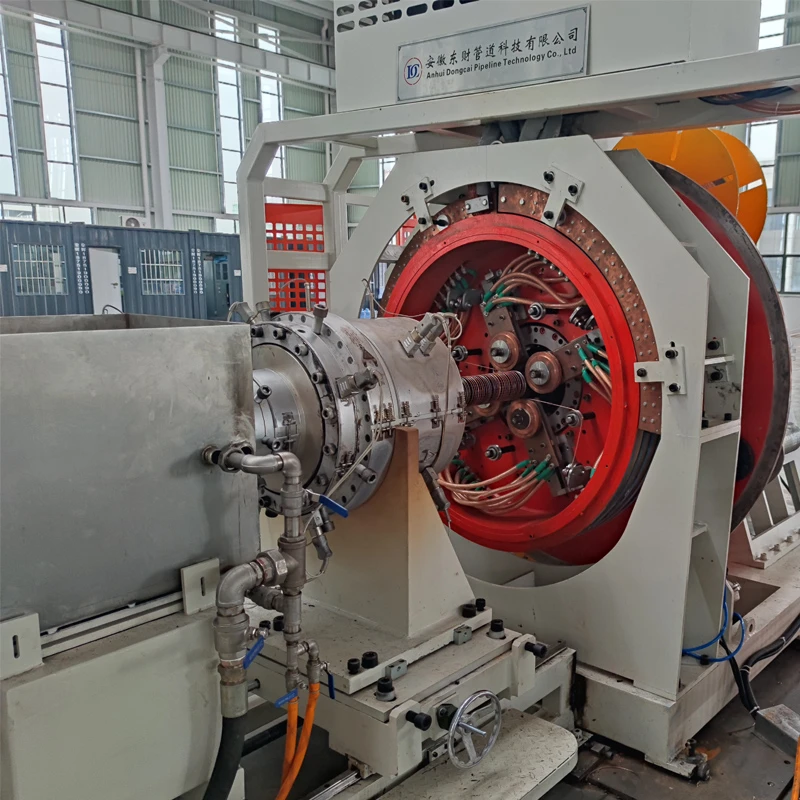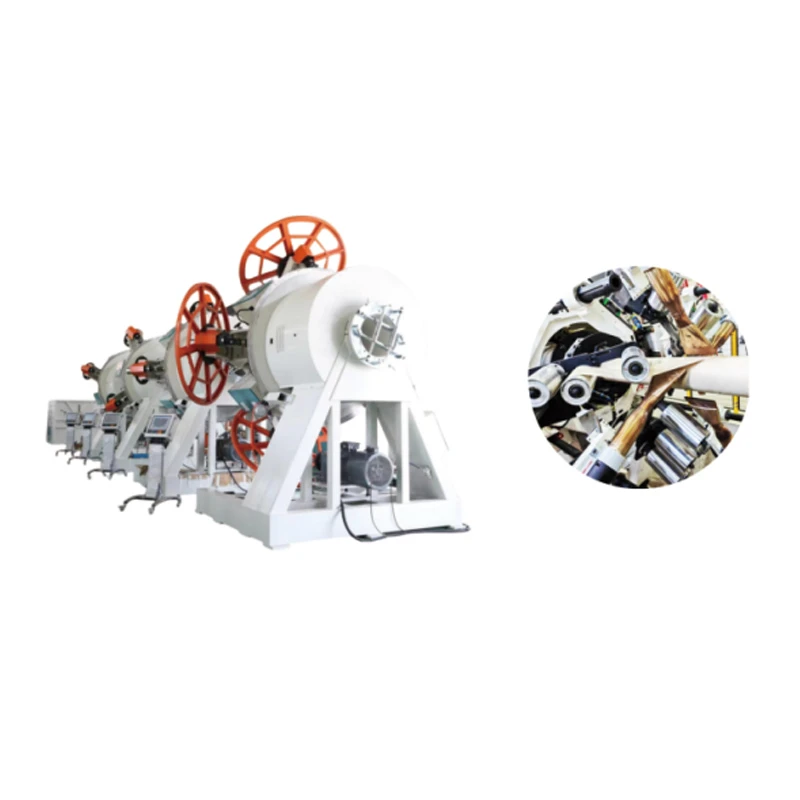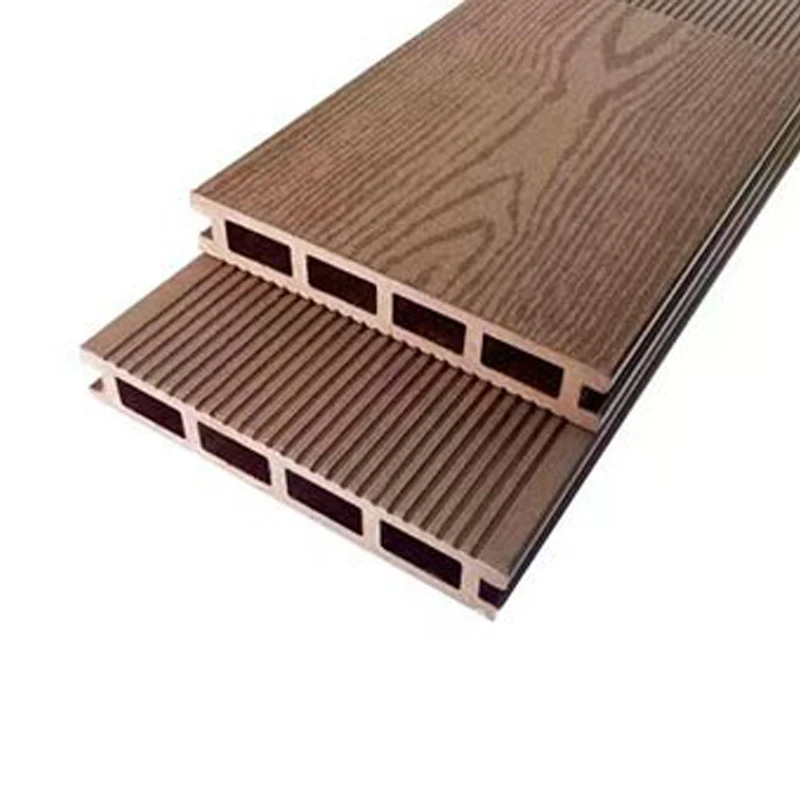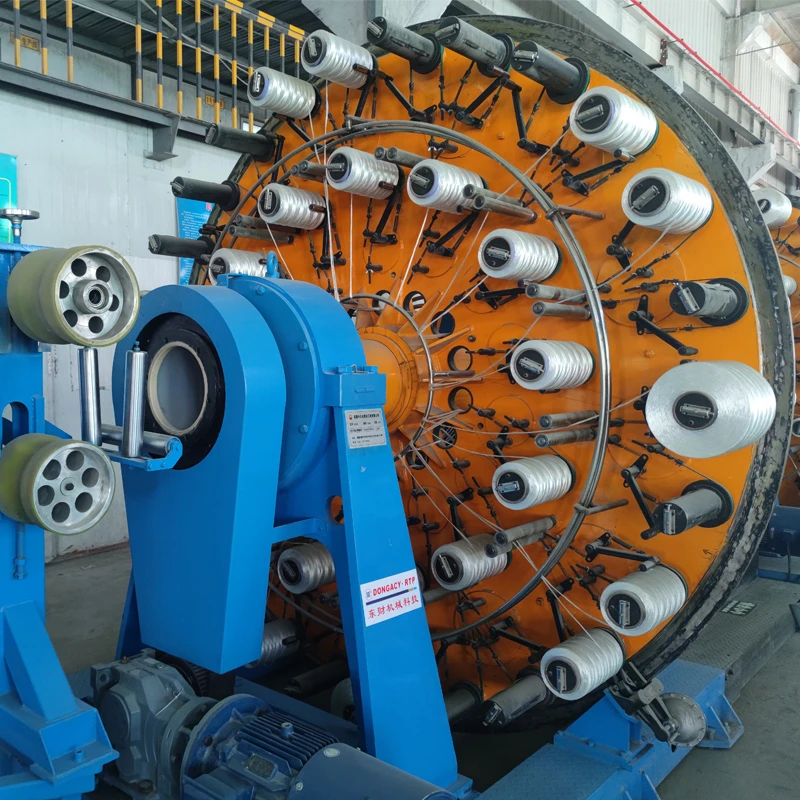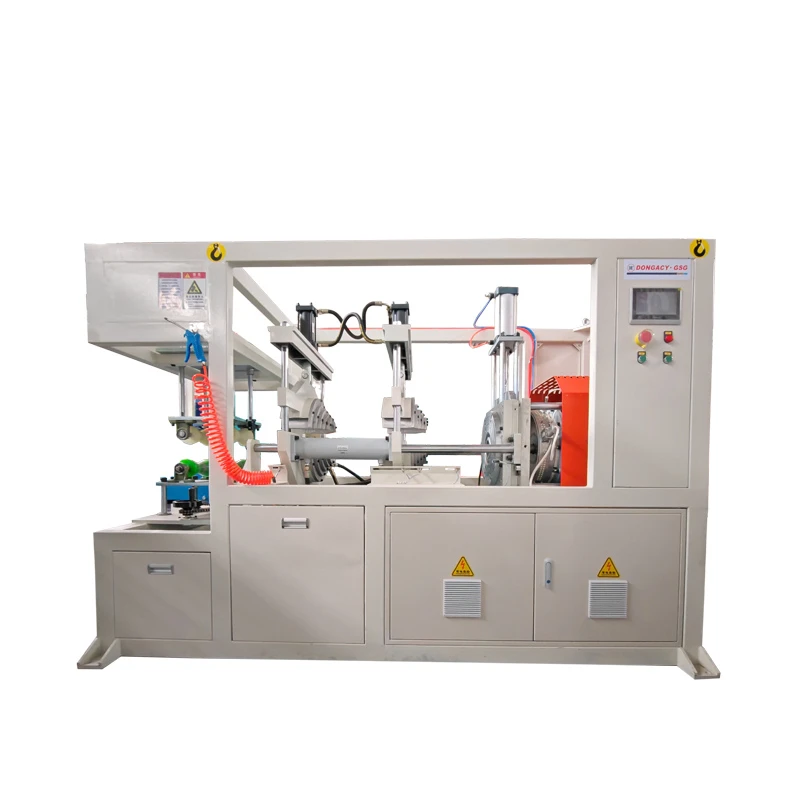
The Evolution of Composite Piping: A Deep Dive into High-Performance Production Lines
In the rapidly evolving landscape of industrial infrastructure, the demand for robust, efficient, and durable piping solutions has never been greater. Traditional steel and plastic pipes, while serving their purposes for decades, often fall short when confronted with the complex challenges of modern applications, including extreme pressures, corrosive environments, and stringent longevity requirements. This necessitates the adoption of advanced materials and manufacturing techniques. The composite pipe production line represents a significant leap forward, offering a superior alternative that integrates the strength of steel with the chemical inertness and flexibility of polyethylene. These sophisticated systems are engineered to produce High Speed Steel Wire Mesh Skeleton Reinforced Polyethylene Composite Pipes, renowned for their exceptional performance characteristics. The strategic investment in such a production line is a testament to an organization's commitment to delivering unparalleled quality and reliability. Understanding the intricate details of this manufacturing process, from raw material selection to final product inspection, is crucial for decision-makers seeking to optimize their industrial operations or enter new markets. Furthermore, considerations such as the overall hdpe machine price and the long-term return on investment associated with state-of-the-art machinery are paramount in the strategic planning phase for any major industrial acquisition. This comprehensive overview will delve into the technical intricacies, application benefits, and market trends defining this transformative technology.
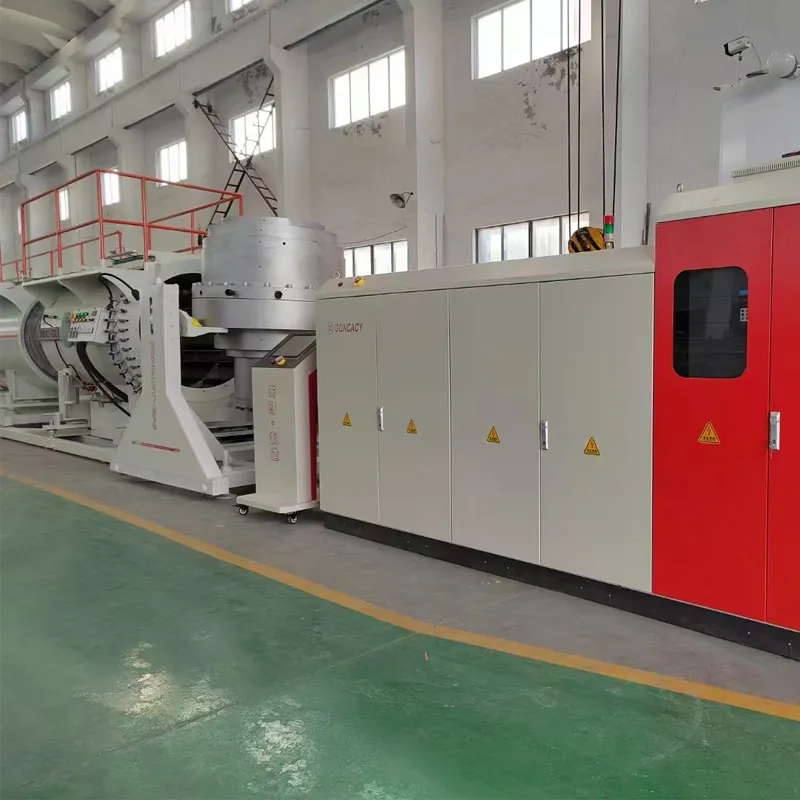
The core advantage of composite pipes lies in their multi-layered structure, which synergistically combines the best attributes of different materials. Unlike single-material pipes, these composite structures mitigate the weaknesses inherent in each individual component while amplifying their strengths. For instance, the steel wire mesh skeleton provides outstanding tensile strength and resistance to internal pressure, a critical factor in high-pressure fluid conveyance. Simultaneously, the inner and outer layers of polyethylene (PE) offer excellent corrosion resistance against a wide range of chemicals, abrasives, and environmental degradation, significantly extending the pipe's service life beyond that of metallic alternatives. This duality ensures that the pipes can withstand harsh operational conditions, from aggressive chemical transport in petrochemical plants to high-volume water distribution in municipal networks. The manufacturing process itself is a highly specialized sequence, emphasizing precision engineering and rigorous quality control at every stage to ensure the integrity and performance of the final product. Advanced extrusion and winding techniques are employed to perfectly bond the layers, preventing delamination and ensuring a homogeneous structure throughout the pipe's length. This meticulous attention to detail during production directly translates into superior field performance, reduced maintenance costs, and enhanced safety for critical infrastructure projects, making the composite pipe production line an indispensable asset for future-proof industrial solutions.
Unveiling the Manufacturing Process: Precision Engineering in Composite Pipe Production
The manufacturing of High Speed Steel Wire Mesh Skeleton Reinforced Polyethylene Composite Pipes on a composite pipe production line is a sophisticated, multi-stage process that leverages cutting-edge extrusion and winding technologies. The journey begins with the precise preparation of raw materials: high-density polyethylene (HDPE) resins and specialized steel wires. HDPE, known for its excellent chemical resistance, flexibility, and longevity, forms the inner and outer protective layers, while the high-strength steel wire mesh provides the structural integrity. The first critical step involves the extrusion of an inner HDPE pipe. This initial pipe serves as the core around which the steel wire mesh is meticulously wound. The winding process is highly automated, utilizing advanced machinery that ensures consistent tension and spacing of the steel wires, forming a robust skeleton. This helical winding pattern is crucial for distributing stress uniformly and maximizing the pipe's resistance to internal pressure and external loads. After the steel mesh is applied, an adhesive layer, often a modified polyethylene, is co-extruded over the steel wire, ensuring a strong bond between the mesh and the subsequent outer PE layer. This adhesive prevents any potential delamination and guarantees the composite nature of the pipe, a key differentiator from simpler designs.

Following the adhesive application, the final outer layer of HDPE is extruded, encapsulating the steel mesh completely and forming a seamless, protective exterior. This co-extrusion process ensures a monolithic structure, where all layers are molecularly bonded, creating a pipe with exceptional durability and resistance to abrasion, UV radiation, and external impact. Post-extrusion, the pipe undergoes a controlled cooling process, typically involving water baths, to stabilize its dimensions and mechanical properties. The temperature profile during cooling is carefully managed to prevent residual stresses that could compromise the pipe's long-term performance. Subsequent stages involve precise calibration of the pipe's diameter and wall thickness using vacuum sizing and spray cooling technologies. Finally, the finished pipe is marked, cut to specified lengths, and prepared for dispatch. Throughout this entire process, stringent quality control measures are implemented. This includes continuous online monitoring of dimensions, wall thickness, and material consistency, alongside offline testing. Adherence to international standards such as ISO 4427 for polyethylene pipes, ASTM F714 for PE pipe, and ANSI/AWWA C906 for PE pressure pipe is non-negotiable, ensuring every pipe segment from the composite pipe production line meets the highest industry benchmarks for pressure rating, impact resistance, and long-term hydrostatic strength. The typical design service life for these pipes often exceeds 50 years under standard operating conditions, a testament to their robust construction and the advanced manufacturing techniques employed.
Technical Parameters and Unrivaled Advantages
The High Speed Steel Wire Mesh Skeleton Reinforced Polyethylene Composite Pipe offers a compelling array of technical parameters and operational advantages that significantly surpass those of conventional piping materials. Key attributes include an impressive pressure resistance, typically ranging from PN 0.6 MPa to PN 3.5 MPa (6 to 35 bar), which makes them suitable for a diverse range of high-pressure fluid transmission applications. Their operational temperature range extends from -40°C to +80°C, accommodating both extreme cold and moderate heat, which is crucial for chemical processes and climate-varied regions. The pipes exhibit remarkable resistance to corrosion, scaling, and chemical attack from acids, alkalis, and salts, an inherent advantage of their PE layers. This chemical inertness translates into a significantly longer service life and reduced maintenance expenditures compared to metallic pipes, which are susceptible to rust and degradation. Furthermore, the smooth inner surface of the polyethylene significantly reduces friction losses, leading to lower pumping energy requirements and improved flow efficiency, contributing to substantial energy savings over the operational lifespan of the system. This efficiency gain, alongside reduced leakage rates common in traditional systems, underscores the economic benefits derived from a high-quality composite pipe production line.
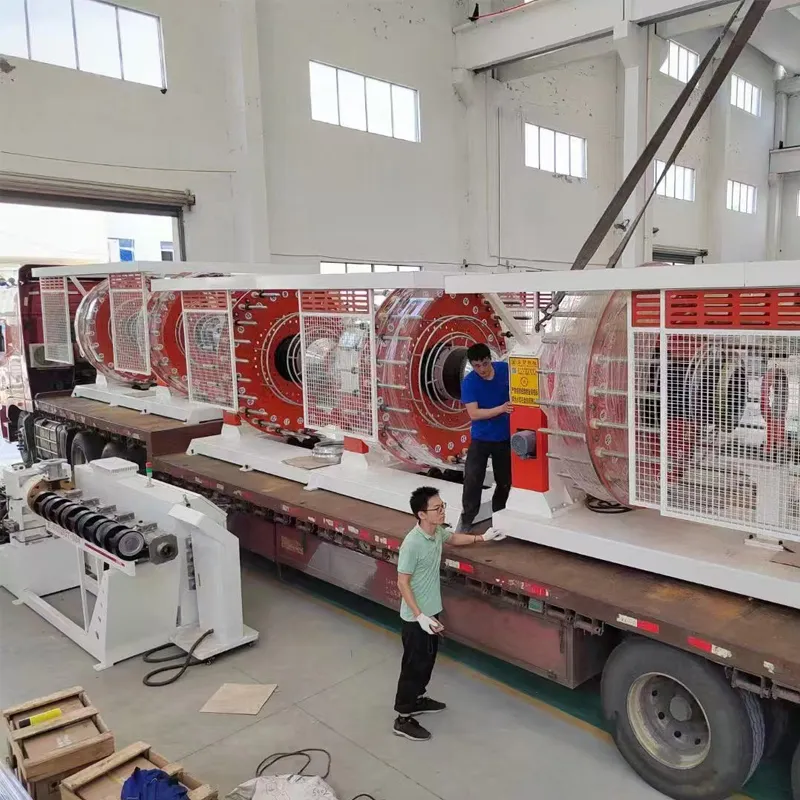
Beyond their material advantages, these pipes are considerably lighter than steel pipes of equivalent strength, simplifying transportation, handling, and installation, thereby reducing overall project timelines and labor costs. Their inherent flexibility, especially for smaller diameters, allows for trenchless installation methods and adaptability to shifting ground conditions, minimizing environmental impact and construction disruption. The integration of steel mesh provides excellent impact resistance and prevents rapid crack propagation, enhancing overall system reliability. Jointing is typically achieved through electro-fusion welding, a reliable and robust method that creates homogeneous, leak-proof connections, eliminating the weak points often associated with mechanical joints. The structural integrity provided by the steel mesh also means that the pipes have a higher resistance to external forces and ground movement, ensuring stability in geologically active areas. The table below provides a representative overview of typical technical specifications for a composite pipe production line, demonstrating the breadth of capabilities and the high performance levels achievable, serving as a critical reference for engineers and project managers.
| Parameter | Specification Range | Notes |
|---|---|---|
| Pipe Diameter (OD) | DN 50mm - DN 630mm | Larger diameters available on specialized lines |
| Nominal Pressure (PN) | 0.6 MPa - 3.5 MPa (6-35 bar) | Higher pressures possible with custom designs |
| Operating Temperature | -40°C to +80°C | Short-term excursions up to 95°C |
| Material (Core) | HDPE (PE100, PE80) | High-grade polyethylene compounds |
| Reinforcement | High-strength Steel Wire Mesh | Carbon steel or stainless steel options |
| Connection Method | Electro-fusion Welding, Flange Connection | Creates homogeneous, leak-proof joints |
| Standard Compliance | ISO 4427, ASTM F714, ANSI/AWWA C906 | Ensures global applicability and quality |
| Service Life | >50 Years (under specified conditions) | Minimizes replacement cycles and TCO |
Versatile Applications and Real-World Impact
The robust design and superior material properties of steel wire mesh reinforced polyethylene composite pipes make them ideal for a vast array of industrial and municipal applications where reliability and longevity are paramount. In the petrochemical industry, these pipes are indispensable for transporting crude oil, natural gas, refined products, and various corrosive chemicals. Their exceptional resistance to both internal and external corrosion, coupled with their ability to withstand high pressures, makes them a safer and more cost-effective alternative to traditional steel pipelines, especially in environments prone to soil corrosion or chemical spills. For instance, in a large-scale oilfield project in the Middle East, our pipes, produced on a specialized composite pipe production line, replaced aging metallic lines, leading to a significant reduction in leakage rates and maintenance expenditures over a five-year period, demonstrating substantial operational savings and enhanced environmental protection.

The mining sector also heavily benefits from these composite pipes for slurry transport, tailings disposal, and water management. The pipes' abrasion resistance and smooth bore minimize frictional losses and wear from abrasive slurries, ensuring continuous operation and reduced downtime, a critical factor in high-volume mining operations. In municipal infrastructure, these pipes are increasingly adopted for potable water supply, wastewater conveyance, and storm drainage systems. Their resistance to bio-fouling and scaling maintains water quality and ensures consistent flow capacity over decades. Moreover, in challenging terrains or seismic zones, the inherent flexibility and high elongation-at-break of these pipes provide superior resistance to ground movement, minimizing the risk of catastrophic pipe failure. A notable application involves their use in urban renewal projects where trenchless technologies (e.g., horizontal directional drilling) are employed to minimize disruption; the composite pipes' flexibility and strong joints are perfectly suited for such installations. Understanding the true hdpe machine price must consider these long-term benefits and the expanded scope of projects that can be undertaken with such advanced production capabilities, demonstrating an exceptional return on investment through superior project execution and reduced lifetime costs.

Ensuring Trust and Authority: Our Commitment to Quality and Support
Our commitment to quality and customer satisfaction is deeply embedded in every aspect of our operations, from the design of our composite pipe production line to post-sales support. We adhere to the highest international standards, holding certifications such as ISO 9001 for quality management, ISO 14001 for environmental management, and CE marking for European conformity, validating our dedication to consistent excellence. Our manufacturing processes are rigorously controlled, employing advanced statistical process control (SPC) and real-time monitoring to ensure that every length of pipe meets or exceeds specified parameters. We have collaborated with leading engineering firms and industry associations globally to refine our production techniques and ensure our products are at the forefront of piping technology. With over two decades of experience in the field, our team of experts possesses unparalleled knowledge in composite pipe technology, offering bespoke solutions and technical consultation that addresses the unique challenges of each project. This extensive track record and institutional knowledge reinforce our authoritative position in the industry, making us a trusted partner for critical infrastructure development.
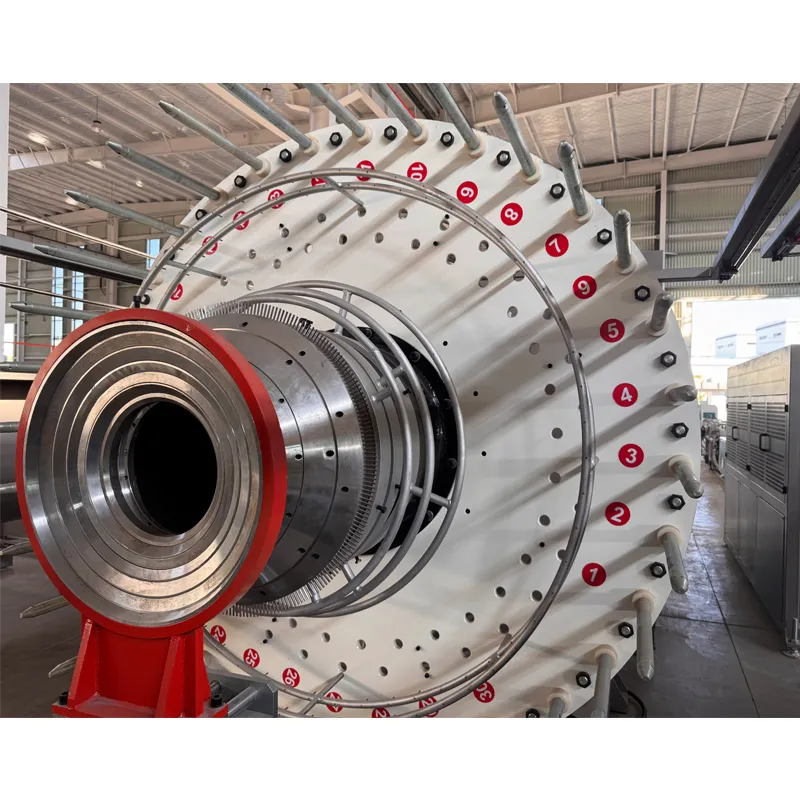
To further solidify trustworthiness, we offer comprehensive support services that extend beyond the initial purchase of a composite pipe production line. Our client support includes detailed technical documentation, on-site training for operation and maintenance, and readily available spare parts to minimize any potential downtime. Standard delivery cycles are carefully managed to align with project timelines, typically ranging from 8 to 12 weeks for production lines, with expedited options available upon request for urgent requirements. Each production line comes with a comprehensive warranty, typically covering mechanical components for a period of 12-24 months, underscoring our confidence in the durability and reliability of our machinery. We also maintain a dedicated team for after-sales service, providing remote and on-site assistance to ensure optimal performance throughout the lifecycle of the equipment. Our transparent approach to hdpe machine price and service agreements ensures that clients receive full value and peace of mind.
Frequently Asked Questions (FAQ)
- Q1: What is the primary advantage of steel wire mesh reinforced PE composite pipe over traditional PE pipe?
- A1: The primary advantage lies in its enhanced pressure resistance and rigidity. While traditional PE pipe is flexible and corrosion-resistant, the integrated steel wire mesh skeleton significantly boosts its mechanical strength, allowing it to withstand higher internal pressures and external loads without significant deformation. This makes it suitable for applications where high working pressure or structural stability is critical, such as long-distance water transmission, gas distribution, or industrial processes with fluctuating pressures. The composite structure also offers superior dimensional stability under varying temperatures, reducing expansion and contraction issues common with pure plastic pipes, thus ensuring a more reliable and durable system, especially crucial for a high-performance composite pipe production line output.
- Q2: How does the service life of these composite pipes compare to steel pipes?
- A2: Steel wire mesh reinforced PE composite pipes typically offer a significantly longer service life, often exceeding 50 years under normal operating conditions, compared to traditional steel pipes which might require replacement within 20-30 years due to corrosion and scaling. The polyethylene layers provide exceptional chemical resistance and prevent corrosion, both internally and externally, eliminating the need for cathodic protection or internal coatings. This inherent resistance to degradation from aggressive media and environmental factors drastically reduces maintenance costs and extends the operational longevity of the pipeline, providing a superior return on investment over the lifecycle of the infrastructure. This longevity is a key factor when considering the initial hdpe machine price against the total cost of ownership.
- Q3: What are the main quality control measures implemented during the production process?
- A3: During the manufacturing of steel wire mesh reinforced PE composite pipes on our composite pipe production line, stringent quality control measures are implemented at every stage. This includes continuous online monitoring of critical parameters such as pipe diameter, wall thickness, and uniformity of the steel wire mesh winding. We conduct regular raw material inspection to ensure the quality of HDPE resins and steel wires. Post-production, finished pipes undergo rigorous offline testing, including hydrostatic pressure tests to verify pressure rating, impact resistance tests, and tensile strength tests on the steel wire. Adherence to international standards like ISO, ASTM, and DIN is strictly maintained, and each batch of pipes is traceable back to its production run, ensuring full accountability and consistent product quality for diverse industrial applications.
References
- ISO 4427-2:2007, Plastics piping systems for water supply, and for drainage and sewerage under pressure - Polyethylene (PE) - Part 2: Pipes.
- ASTM F714-2013, Standard Specification for Polyethylene (PE) Plastic Pipe (SDR-PR) Based on Outside Diameter.
- ANSI/AWWA C906-15, AWWA Standard for Polyethylene (PE) Pressure Pipe and Fittings, 4 In. (100 mm) Through 63 In. (1,600 mm).
- Plastics Pipe Institute (PPI), Handbook of PE Pipe.
- International Society for Trenchless Technology (ISTT), Guidelines for Trenchless Technology.
-
Innovative Solutions in PVC Pipe Production LineNewsJul.18,2025
-
Innovative Solutions in Pipe Extrusion Production LineNewsJul.18,2025
-
Advanced Plastic Profile Extrusion SolutionsNewsJul.18,2025
-
PVC Profiles: The Future of Durable and Cost-Effective Construction SolutionsNewsJun.06,2025
-
PVC Pipe Extrusion LineNewsJun.06,2025
-
High-Quality Polyethylene Pipe Production LineNewsJun.06,2025
-
High-Performance Tube Production LineNewsJun.06,2025

